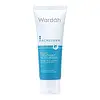What's inside
What's inside
 Key Ingredients
Key Ingredients

 Benefits
Benefits

 Concerns
Concerns

 Ingredients Side-by-side
Ingredients Side-by-side

Water
Skin ConditioningPropylene Glycol
HumectantGlycerin
HumectantZinc Gluconate
Skin ConditioningPhenoxyethanol
PreservativeButylene Glycol
HumectantPEG-40 Hydrogenated Castor Oil
EmulsifyingTrideceth-9
EmulsifyingAloe Barbadensis Leaf Extract
EmollientDisodium EDTA
Ethylhexylglycerin
Skin ConditioningParfum
MaskingMenthyl Lactate
MaskingPPG-26-Buteth-26
Skin ConditioningPolysorbate 20
EmulsifyingHamamelis Virginiana Extract
AntiseborrhoeicPotassium Sorbate
PreservativeSodium Benzoate
MaskingWater, Propylene Glycol, Glycerin, Zinc Gluconate, Phenoxyethanol, Butylene Glycol, PEG-40 Hydrogenated Castor Oil, Trideceth-9, Aloe Barbadensis Leaf Extract, Disodium EDTA, Ethylhexylglycerin, Parfum, Menthyl Lactate, PPG-26-Buteth-26, Polysorbate 20, Hamamelis Virginiana Extract, Potassium Sorbate, Sodium Benzoate
Dimethicone
EmollientButylene Glycol
HumectantGlycerin
HumectantHydroxyethyl Acrylate/Sodium Acryloyldimethyl Taurate Copolymer
Emulsion StabilisingIsononyl Isononanoate
EmollientCetearyl Dimethicone Crosspolymer
Sorbitan Stearate
EmulsifyingPolysorbate 60
EmulsifyingSilica
AbrasiveC14-22 Alcohols
Emulsion StabilisingTriethanolamine
BufferingPropylene Glycol
HumectantSalicylic Acid
MaskingPhenoxyethanol
PreservativeC12-20 Alkyl Glucoside
EmulsifyingChlorphenesin
AntimicrobialDisodium EDTA
Parfum
MaskingCapryloyl Glycine
CleansingAscorbyl Tetraisopalmitate
AntioxidantHexylene Glycol
EmulsifyingSarcosine
Skin ConditioningCentella Asiatica Extract
CleansingCinnamomum Zeylanicum Bark Extract
AntimicrobialPolygonum Cuspidatum Root Extract
AntioxidantScutellaria Baicalensis Root Extract
AstringentGlucose
HumectantCamellia Sinensis Leaf Extract
AntimicrobialGlycyrrhiza Glabra Root Extract
BleachingChamomilla Recutita Flower Extract
MaskingRosmarinus Officinalis Leaf Extract
AntimicrobialDimethicone, Butylene Glycol, Glycerin, Hydroxyethyl Acrylate/Sodium Acryloyldimethyl Taurate Copolymer, Isononyl Isononanoate, Cetearyl Dimethicone Crosspolymer, Sorbitan Stearate, Polysorbate 60, Silica, C14-22 Alcohols, Triethanolamine, Propylene Glycol, Salicylic Acid, Phenoxyethanol, C12-20 Alkyl Glucoside, Chlorphenesin, Disodium EDTA, Parfum, Capryloyl Glycine, Ascorbyl Tetraisopalmitate, Hexylene Glycol, Sarcosine, Centella Asiatica Extract, Cinnamomum Zeylanicum Bark Extract, Polygonum Cuspidatum Root Extract, Scutellaria Baicalensis Root Extract, Glucose, Camellia Sinensis Leaf Extract, Glycyrrhiza Glabra Root Extract, Chamomilla Recutita Flower Extract, Rosmarinus Officinalis Leaf Extract
Ingredients Explained
These ingredients are found in both products.
Ingredients higher up in an ingredient list are typically present in a larger amount.
Butylene Glycol (or BG) is used within cosmetic products for a few different reasons:
Overall, Butylene Glycol is a safe and well-rounded ingredient that works well with other ingredients.
Though this ingredient works well with most skin types, some people with sensitive skin may experience a reaction such as allergic rashes, closed comedones, or itchiness.
Learn more about Butylene GlycolDisodium EDTA plays a role in making products more stable by aiding other preservatives.
It is a chelating agent, meaning it neutralizes metal ions that may be found in a product.
Disodium EDTA is a salt of edetic acid and is found to be safe in cosmetic ingredients.
Learn more about Disodium EDTAGlycerin is already naturally found in your skin. It helps moisturize and protect your skin.
A study from 2016 found glycerin to be more effective as a humectant than AHAs and hyaluronic acid.
As a humectant, it helps the skin stay hydrated by pulling moisture to your skin. The low molecular weight of glycerin allows it to pull moisture into the deeper layers of your skin.
Hydrated skin improves your skin barrier; Your skin barrier helps protect against irritants and bacteria.
Glycerin has also been found to have antimicrobial and antiviral properties. Due to these properties, glycerin is often used in wound and burn treatments.
In cosmetics, glycerin is usually derived from plants such as soybean or palm. However, it can also be sourced from animals, such as tallow or animal fat.
This ingredient is organic, colorless, odorless, and non-toxic.
Glycerin is the name for this ingredient in American English. British English uses Glycerol/Glycerine.
Learn more about GlycerinParfum is a catch-all term for an ingredient or more that is used to give a scent to products.
Also called "fragrance", this ingredient can be a blend of hundreds of chemicals or plant oils. This means every product with "fragrance" or "parfum" in the ingredients list is a different mixture.
For instance, Habanolide is a proprietary trade name for a specific aroma chemical. When used as a fragrance ingredient in cosmetics, most aroma chemicals fall under the broad labeling category of “FRAGRANCE” or “PARFUM” according to EU and US regulations.
The term 'parfum' or 'fragrance' is not regulated in many countries. In many cases, it is up to the brand to define this term.
For instance, many brands choose to label themselves as "fragrance-free" because they are not using synthetic fragrances. However, their products may still contain ingredients such as essential oils that are considered a fragrance by INCI standards.
One example is Calendula flower extract. Calendula is an essential oil that still imparts a scent or 'fragrance'.
Depending on the blend, the ingredients in the mixture can cause allergies and sensitivities on the skin. Some ingredients that are known EU allergens include linalool and citronellol.
Parfum can also be used to mask or cover an unpleasant scent.
The bottom line is: not all fragrances/parfum/ingredients are created equally. If you are worried about fragrances, we recommend taking a closer look at an ingredient. And of course, we always recommend speaking with a professional.
Learn more about ParfumPhenoxyethanol is a preservative that has germicide, antimicrobial, and aromatic properties. Studies show that phenoxyethanol can prevent microbial growth. By itself, it has a scent that is similar to that of a rose.
It's often used in formulations along with Caprylyl Glycol to preserve the shelf life of products.
Propylene Glycol is an odorless, colorless liquid. As a humectant, it helps skin retain moisture. It also aids in delivering active ingredients.
Another role of this ingredient is preventing a product from melting or freezing. Propylene glycol also adds antimicrobrial properties to a product, elongating product lifespan.
This ingredient is considered an organic alcohol and commonly added into both cosmetics and foods.
Those with sensitive skin or conditions may develop a rash when using this ingredient.
Learn more about Propylene Glycol